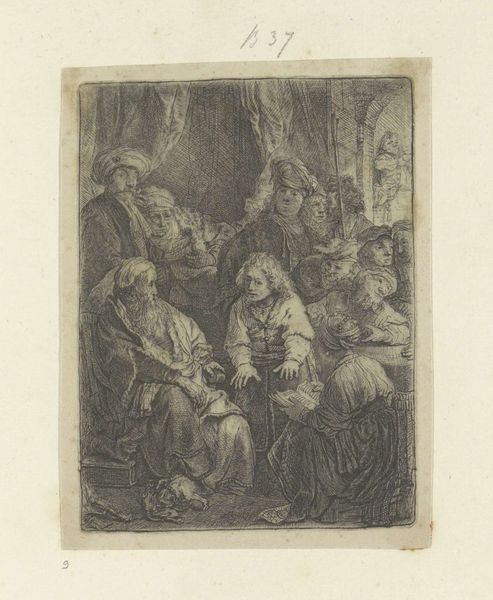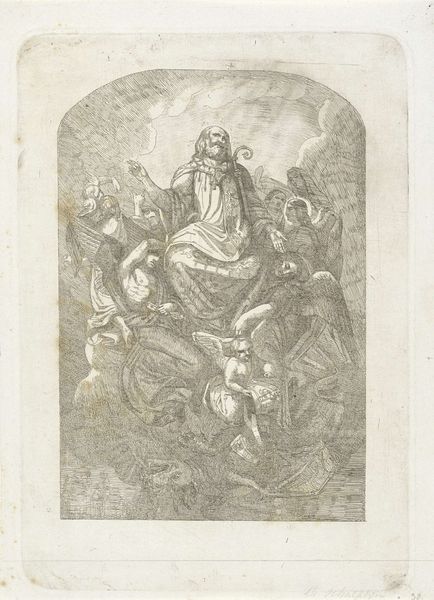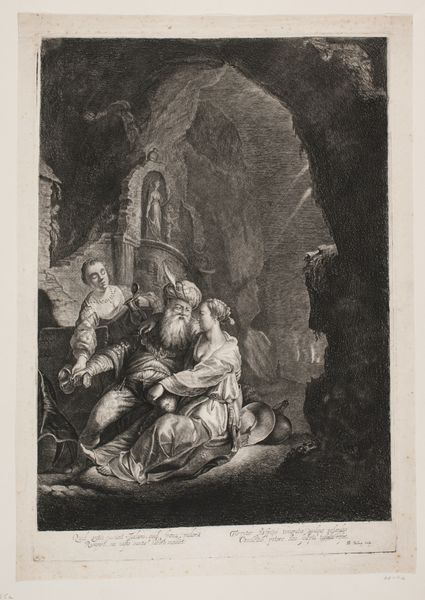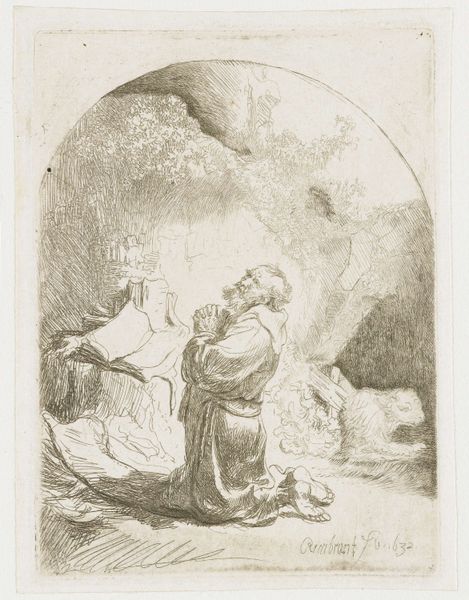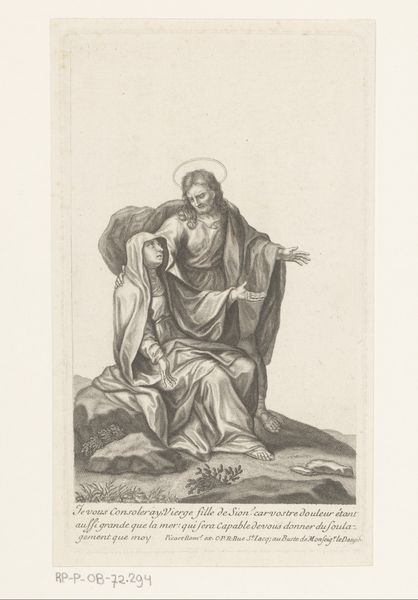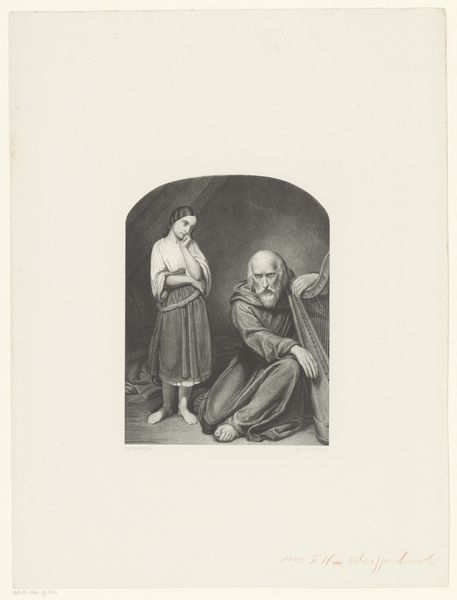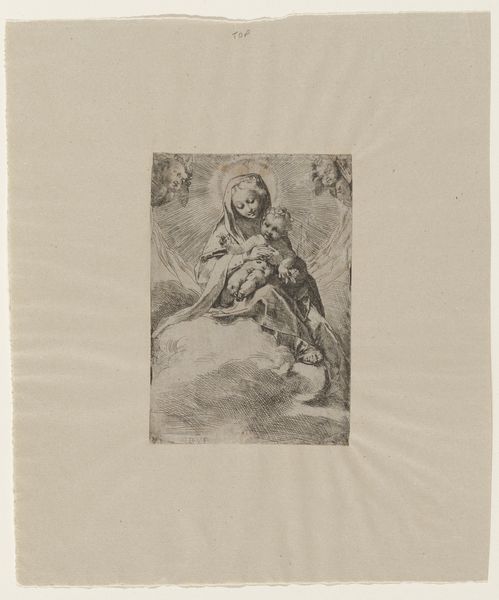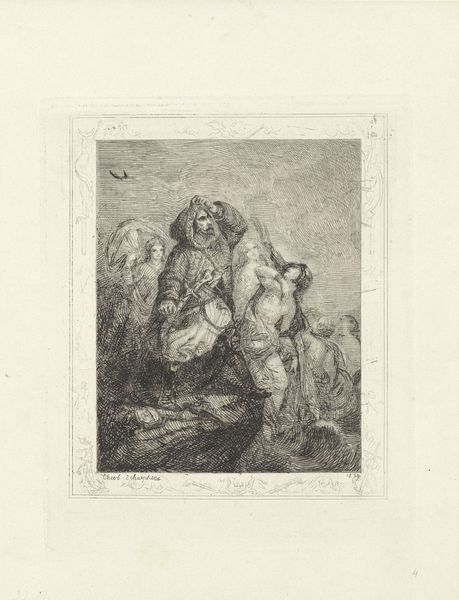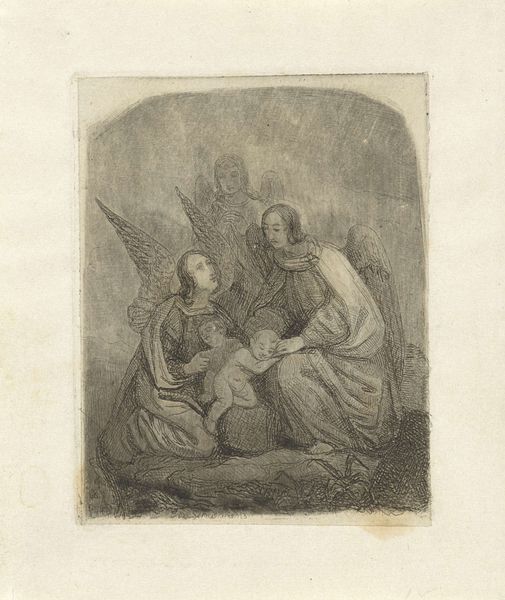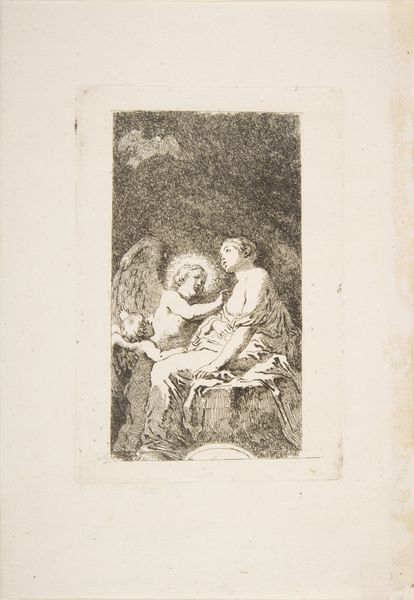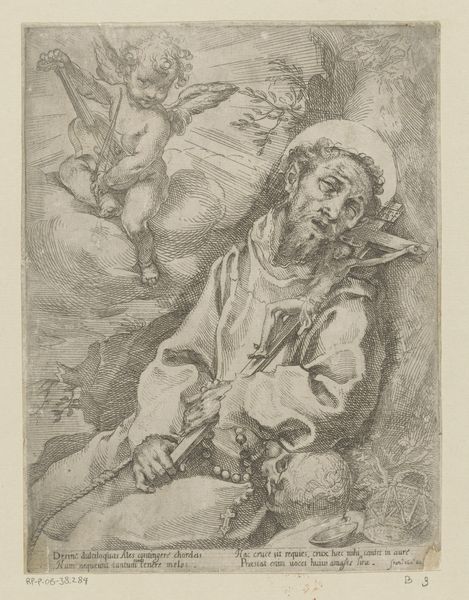
drawing, print, etching
#
portrait
#
drawing
#
narrative-art
# print
#
etching
#
pencil sketch
#
charcoal drawing
#
pencil drawing
Dimensions: height 210 mm, width 136 mm
Copyright: Rijks Museum: Open Domain
Curator: This etching, “Lambertus, Bishop of Maastricht,” by Theodoor Schaepkens, offers a glimpse into a revered figure of the past, made sometime between 1825 and 1883. It is held here at the Rijksmuseum. Editor: There's a solemn, almost reverent quality to it. The soft, shaded tones give it a dreamlike appearance. The halos really get my attention. Curator: Absolutely. The etching's portrayal of Lambertus is deliberate, serving not just as a portrait but as a symbolic representation. His martyrdom in the 8th century cemented his place as a champion of justice and faith. He defied Pepin the Younger and allegedly denounced his adultery. Editor: The objects accompanying Lambertus, like the crozier and keys, become visual keys themselves. The crozier signifies his role as a shepherd of his flock. The keys… are those the keys to Maastricht? Curator: Possibly the keys to Maastricht, but more generally the keys to the Kingdom of Heaven. Lambertus, through his position in the Church, holds spiritual authority, and by including those elements, the artist strengthens the image. Editor: It speaks to the complex interplay between secular power and religious authority during that period, doesn't it? One challenges and is destroyed by the other. Curator: Precisely. It's also crucial to remember how these images circulated and were consumed. Prints like this made historical figures and their stories accessible to a broader audience, contributing to a shared cultural memory. It may be intended for domestic display and consumption. Editor: I hadn't considered the reproduction aspect. Knowing this, do you think the choice of monochrome influences its perception as serious and historical? I wonder how it was regarded at the time compared to our perspective today? Curator: Yes, I agree, monochrome certainly emphasizes a more serious tone. Also, the artistic trends in the 19th century led to more historical pieces because it gave expression to contemporary ideas about the past. Artists found inspiration in dramatic events to inspire certain behaviors and ethics in contemporary society. Editor: This has given me new insights. Thank you for helping me dive beneath the image! Curator: The pleasure was all mine. Examining how art shapes and reflects collective identity is an ever evolving experience!
Comments
No comments
Be the first to comment and join the conversation on the ultimate creative platform.
